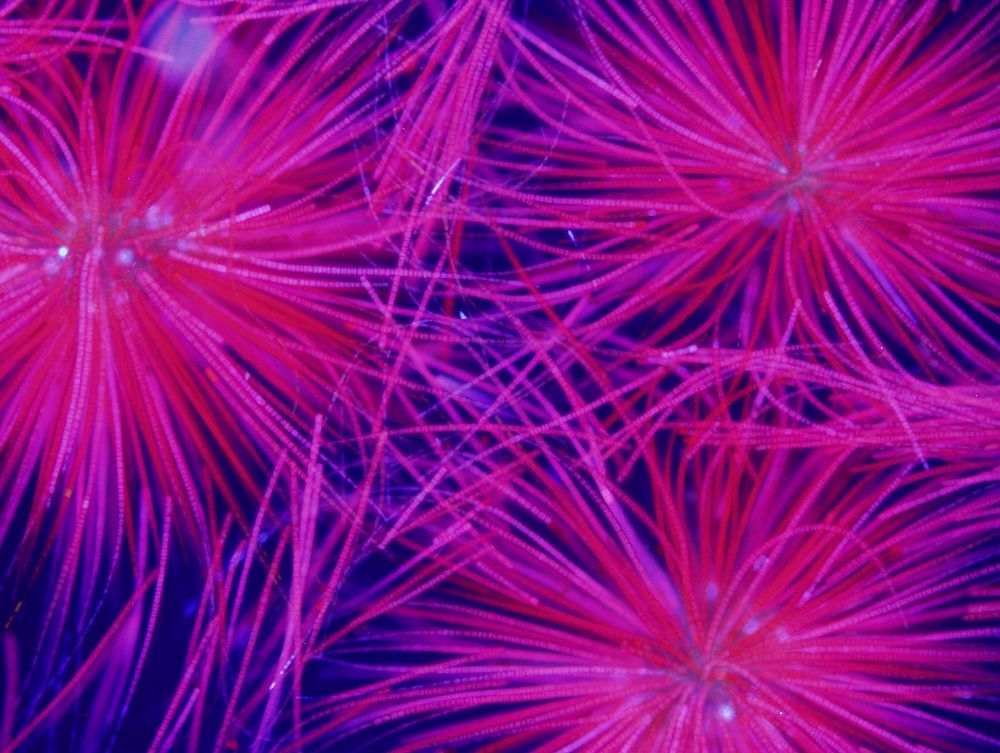https://www.usa.gov/copyrighted-government-workshttps://www.rawpixel.com/image/4043963

Harmful Water Organisms — Here's a photo taken of gloeotrichia echinulata under an epifluorescent microscope which emits ultraviolet light. Using ultraviolet light, the filaments glow red from chlorophyll, while other pigments give various hues of purple, which may be a hint about the health of the cells.
There may be organisms in lakes, reservoirs, rivers and streams, that produce natural toxins. When a harmful algal bloom is present with these toxins, there is a risk from drinking the water or consuming fish and shellfish. This organism is just one example. The Native American and Alaska Native communities that are dependent on subsistence fishing have an increased risk of exposure to these cyanotoxins. It is important to recognize the presence of an algal bloom in a waterbody and to distinguish a potentially toxic harmful algal bloom from a non-toxic bloom.
Scientists at USGS created a guide which provides field images that show cyanobacteria blooms, some of which can be toxin producers, as well as other non-toxic algae blooms and floating plants that might be confused with algae. The guide also provides microscopic images of the common cyanobacteria that are known to produce toxins, as well as images of algae that form blooms but do not produce toxins. Original public domain image from Flickr
Public DomainFree CCO U.S. Government image for Personal and Business use